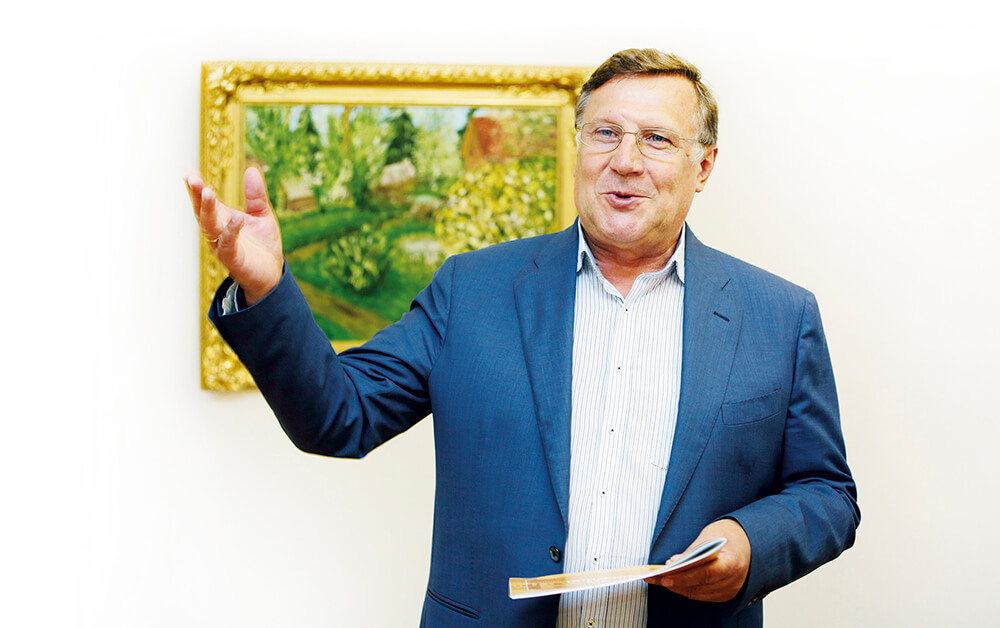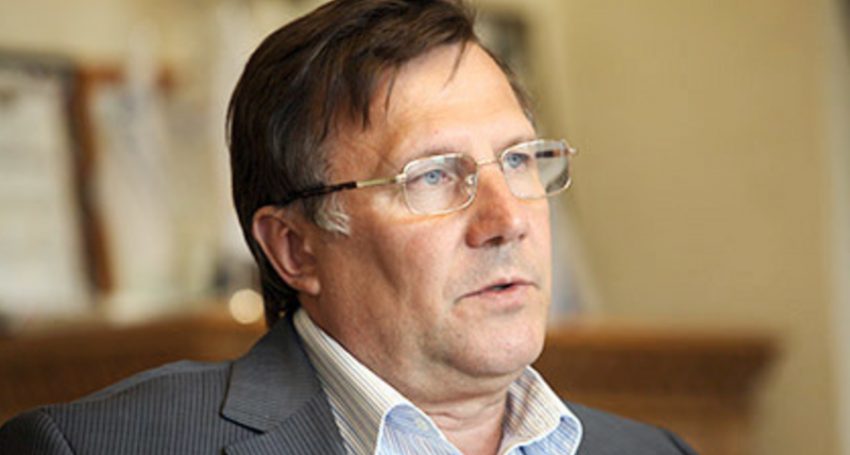Viacheslav Zarenkov is the founder and CEO of the Etalon Group. He graduated from the Leningrad Civil Engineering Institute. He is a magistrate, a candidate of technical sciences and a candidate of architecture. He is also an academician of several Russian and foreign academies and an honorary academician of the Russian Academy of Sciences. Finally, he holds a doctorate in economic sciences and acts as a professor.
Viacheslav Adamovich Zarenkov. You are known as one of the largest developers in Russia. Tell us a bit about your personal path to success?
To achieve success, you just need to want to achieve success; to go for it. Since childhood, I have worked hard. I am a workaholic by nature and when people ask me when I earned my first penny, I can tell them that, most likely, I was seven-years-old. Then, there was school, college and all of the steps of personal and professional growth, starting from the simple worker to the CEO. I never missed a single step, trying to improve my work and I always did everything one level higher than needed. Here is the secret. You just need to dedicate yourself to the work, although there may be a complication, like a family or a wife. I am very grateful to my wife, Galina Nikolaevna, for her endless wisdom and support at all times.
For success, it is also important to draw on your collective knowledge and capabilities and all will be well, but the important thing is never to cheat.
I believe that success comes to people who are running an honest business because any other way can only lead to only short-term success and the next step will be a step down.
How did you get the idea to create, to paint the first painting or to write the first book?
The work of the builder involves knowledge of colour, architecture and composition. The first picture I did was when I built my first house and decided to decorate the walls with pictures. Unfortunately, I did not find anything suitable. I went out on the balcony and drew the view from my balcony.

Do you have a large collection of paintings?
Not big. It is about 40 paintings.
Have you had a personal exhibition?
I periodically arrange an exhibition. Recently, the Derzhavin Museum in St. Petersburg hosted my solo exhibition. Individuals tried to purchase some of the paintings for big money; around 100,000 Euros, but I don’t sell them. I have a lot of pictures that I gave away to friends. Initially, I was not even thinking to create some kind of collection and now I regret that did not even take a photo of the pictures for a memento. I know that some of the paintings that I gave away were later resold.
And what is the history of you writing that first book?
According to tradition, everyone who comes to my office definitely gets a “memory souvenir”. My 60th birthday was planned for 800 guests, but there was a problem. What could be given to the guests for a memory? I decided to write a book of short stories. Quickly enough, the first 1000 copies were printed and, after the event, people began asking to buy the book. We had to print an additional circulation of 5,000 copies and later it increased to 10,000 copies.
Why did you choose to write a storybook? Today, people do not want to read at all. These little stories are an opportunity to convey important and interesting ideas to the reader in a condensed form.
There are still lovers of books in our time, which I happily often see in bookstores.
The “Creative World” project was created under your leadership. Why was it done and what is its meaning?
When our company went to IPO in 2011 and I had to present it to the international business community, I realised that, even among these smart people, they have no clear idea about Russia; its culture, science and mentality. I decided to show them Russia through art because, through the business, it was pointless.
The entire project consists of artistic, literary and musical parts. We take, for two weeks, a group of artists, some of whom are famous, along with beginners. They write, dealing with the same creative people. In five years, we have toured 14 countries. We are one big family now.
Recently, under your leadership, the installation of domes on a newly built Russian Orthodox Church in Nicosia was held. Tell us about it?
This is a full-scale major project involving a temple complex of buildings, with playgrounds, walkways, Russian saints and pavilions dedicated to Christmas, Epiphany and other holidays.
The temple itself is planned to finish by Christmas. The consecration of the entrance is scheduled for March 27th, with a full consecration in May, during the Russian-Cyprus festival. We are building the same temple in St. Petersburg and we recently built a church in Serbia.
You are setting a good example to those who financially can implement such projects. Do you find it easy, in the business community, to find people who will support you in such cases?
Yes, of course, but not to the extent I would like. Usually, when building such large-scale projects, we start with a selected Board of Trustees. These people fulfil the nominal roles of officials, ministers, politicians and others who are further removed from the real affairs. In the end, apart from meetings and ostentatious appearances, no significant construction is done. In our case, it’s simple: We had the idea, gathered a group of professionals and, almost a year into this large-scale project, it was implemented.

You, as a diver, were the initiator of the project “Planet Calypso”. Tell us, what was it about?
We decided to make a series of television programmes from the 1950s series “Planet Calypso”, about the famous diver Jacques-Yves Cousteau and his travels.
We carried out six expeditions and took very good shots. We decided to find the ship, Calypso, on which Cousteau made all of his travels and we found it somewhere near Marseille, in a derelict state. The copyright holders informed us that the price would be 15 million Euro and the implementation of this idea stopped. Now, we are considering the possibility of a more extended project, telling viewers about what has changed during this period and how the submarine has changed as technology has emerged. Also, how different the attitudes of people are to underwater flora and fauna. So far, everything is in limbo.
Have you personally been involved in underwater filming?
Of course, as a diver, I participated in all expeditions. Our team was immersed in the Philippines, the Galapagos and the Red Sea. We have been to more than thirty places around the globe. It is a completely different world, especially when you’re going into underwater caves and these caves are seeping sunlight. It creates an incredible picture.
This is the New Year’s issue. What would you wish to our readers in the New Year?
Every person on earth deserves to be happy. Always be positive and happy! It all depends on you and not on the will of others. If you want to be happy, then be happy! Happiness is in your hands!


